This article has been taken from the latest Fleet News safety special report Cut Your Risk. It is sponsored by Europcar and Kwik Fit.
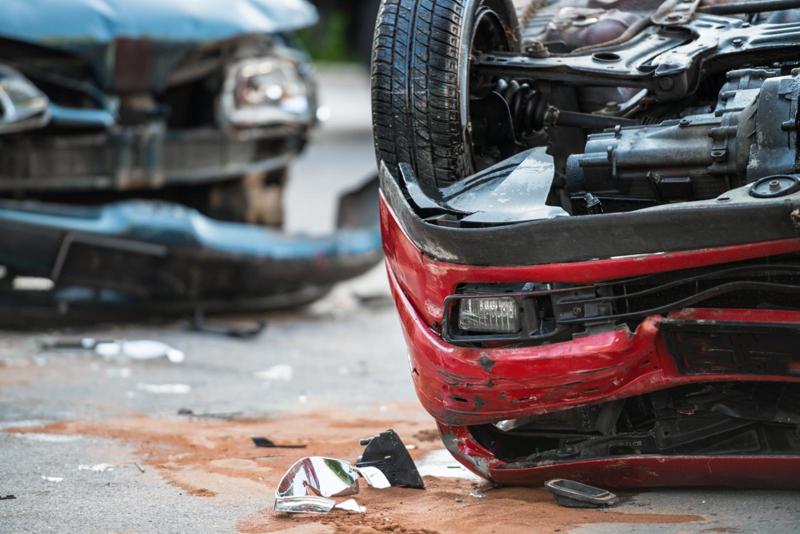
Running a safe fleet has many benefits, ranging from driver health to improving efficiency. Here’s what they are.
1 Improved driver health and well-being
2 Transition to electric vehicles
3 A safe fleet will cost less money
1 Improved driver health and well-being
Driver health and well-being has risen up the fleet priority list in recent years and for good reason: happier and healthier employees are more productive and loyal.
“When Driving for Better Business (DfBB) started in 2007, it was all about the cost benefits because health and safety wasn’t really anywhere on anybody’s to-do list,” says Simon Turner, campaign manager at the National Highways programme, which helps employers reduce work-related road risk.
“That’s different now. Employees, certainly the younger ones, are looking for companies that will look after them and do the right things.
“There’s a much better appreciation of the moral angle in treating staff well and looking after their safety.”
This is reflected in the evolving attitudes of organisations towards staff well-being, with many organisations reflecting this by introducing ‘zero harm’ safety cultures.
While many organisations feel they have a moral – as well as legal - responsibility to keep employees safe, it also has a positive effect on fleet operations.
Happy and healthy drivers will be more fulfilled by their work, improving loyalty and staff retention, while they will also be more engaged in their job.
This can lead to better productivity and can also mean they are more likely to listen and act on feedback around driver behaviour, be more receptive to adopting new technology such as dashcams and pay attention to cost-saving measures they can influence.
It also means that, when dealing with customers, they are more likely to act as a professional ambassador and representative of the organisation, thereby improving brand reputation.
Looking after driver health now goes far beyond simply reducing physical injuries through cutting the incidence of collisions.
An increasing number of organisations have introduced initiatives to look after the mental health and well-being of drivers on a day-to-day basis.
This can be influenced by long hours, irregular schedules and the often sedentary nature of the job. These can combine to create significant mental and physical health risks, including musculoskeletal disorders, cardiovascular diseases and increased levels of stress and anxiety.
To help tackle this, mental health charity CALM (Campaign Against Living Miserably) has partnered with DfBB to produce a toolkit and various resources to educate and support organisations.
There are also other actions organisations can take to improve driver well-being.
Regular check-ins can be scheduled with drivers to have open conversations with them.
This will give them the opportunity to talk about any concerns or stresses they have.
A support system could be put in place to ensure drivers have access to impartial, additional help, while telematics data can be monitored to identify changes to driver behaviours that may be an indicator of issues, such as increased instances of harsh braking or rapid acceleration.
Regular health screenings and support programmes can be offered and could include eye tests, ergonomic assessments, cardiovascular health screenings and mental health resources.
The quality of a driver’s diet may also be an issue as they could be grabbing food on the go, and this could lead to diabetes which is becoming a hidden epidemic in UK workplaces, says Kate Walker, managing director of the Diabetes Safety Organisation.
2 Transition to electric vehicles
The transition to electric vehicles (EVs) brings its own challenges from a safety perspective.
“They function differently from conventional fuel-powered vehicles; they offer instant acceleration, regenerative braking and other advanced features,” says Nick Butler, director of DriveTech.
“Their unique characteristics present risks if drivers haven’t received the proper training; they must be confident behind the wheel.”
In other cases, the transition to zero-emission vehicles is meaning that a number of fleets are operating older vehicles – either through keeping hold of existing vehicles for longer, or by buying used diesel vans.
Older vehicles may lack the safety technology of the newest vehicles, as well as being more susceptible to wear and tear or reliability issues, making robust management vital.
The latest Leasing Outlook report from the BVRLA (British Vehicle Rental and Leasing Association) notes the complications of running electric vans is prompting some operators to schedule another cycle of diesel vans or extend replacement cycles rather than make the switch to zero tailpipe emissions.
This is backed up by last year’s FN50 research of the UK’s largest contract hire and leasing companies, which found the average van lease length had increased year-on-year from 43 months to 46.3 months.
The Zero Emission Vehicle (ZEV) Mandate is also influencing fleet behaviour when it comes to procuring vans, says Shoreham Vehicle Auctions.
It adds some fleets are buying used LCVs at auction to avoid increasing pressure from OEMs to order one or more EVs for every 10 new diesel vehicles they order.
“Fleets are buying good quality used vehicles to avoid being forced to buy eLCVs from OEMs keen to meet their ZEV Mandate targets,” says Alex Wright, managing director of Shoreham Vehicle Auctions.
“Many fleets are still not prepared for an electric journey as their usage and mileage sits outside the capability of current eLCVs.”
3 A safe fleet will cost less money
While there are many moral and legal reasons for an organisation to take fleet safety seriously, there are also strong business ones.
A safer fleet is also a more efficient and cost-effective one, and this is an important argument for a fleet decision-maker if they need to win buy-in to risk management policies from a reluctant board.
“Driving for work is one of the highest-risk |activities that most employees undertake,” says Simon Turner, campaign manager for DfBB.
“There is a strong business case for managing work-related road safety. Fewer road incidents mean fewer days lost to injury; fewer repairs to vehicles with vehicles out of action; fewer missed orders and overall reduced running costs.”
On the surface, it may appear that the cost of a collision is restricted mainly to vehicle damage, but this is just one small part of the picture.
There are many other factors that need to be taken into account, including additional vehicle costs such as recovery and storage, downtime, reduced resale value; driver costs, such as loss of expertise, lost productivity, personal injury; third-party costs, including vehicle and/or property damage, loss of earnings and legal costs; and other costs, including missed sales, damaged or lost stock, business reputation and management and administration time.
To highlight the true impact, road safety charity Brake uses the example of when a vehicle hits another from behind, it could incur £1,000 of damage, cause £1,000 of damage to the other one, and there may be an injury claim of £1,000 to the other driver.
While the reported cost of the collision is £3,000, Brake says the actual cost could easily be double this when the other factors are taken into account: if the organisation makes a 10% return on sales, to cover this collision it would require an additional £60,000 of revenue.
Many examples and case studies of fleets which have achieved significant savings after introducing risk management programmes can be found throughout, for example, the fleet profile section on the Fleet News website, as well as the case study section of Driving for Better Business’s site.
For example, Tarmac saw a decrease in speeding of 10% across all geographical areas, and its insurance claims drop by 48%, while Clancy Docwra reported a saving of £65,000 on fuel and traffic offences down 9%.
The Canal and River Trust, which looks after 2,000 miles of historic canals and rivers, has a fleet of 517 LCVs and saved £200,000 in the first 12 months after overhauling its approach to road risk management.
Key priorities included ensuring that all drivers had valid driving qualifications and licences – bringing driver licence compliance from 20% to 99% – and ensuring the vehicles were correctly maintained.
Steve Mulvaney, fleet manager at Canal and River Trust, also renewed the organisation’s driver handbook, introduced driver risk assessments, a training programme and telematics to monitor driver behaviour and identify areas for improvement.
“What’s clear is that we have gone from zero to a much safer, compliant and cost-effective fleet,” says Mulvaney.
The measures reduced annual fleet spend by 14% year-on-year, reduced non-fault collisions by 21%, at-fault collisions by 19% and fuel use by 12% among specifically trained drivers.
4 Safe fleets win work
Demonstratable fleet safety is increasingly becoming a requirement for organisations when contracting work from suppliers, says Simon Turner, campaign manager at Driving for Better Business.
Larger organisations may already ask for emissions from suppliers to fulfil their Greenhouse Gas Protocol Scope 3 reporting requirements, and Turner says this is spreading to safety.
“There is an increasing trend now for large companies to demand proof of good risk management from their supply chain,” he adds.
“For example, if big companies want to work for National Highways as a contractor on a major project, they have to supply a copy of their driving for work policy and proof that they not only manage it well, but they demand that their supply chains manage it well.
“A major last-mile delivery company is just about to instigate the same thing where they have told their supply chain they have got to be a part of DfBB, and make sure they have a policy.
“Increasingly, you’re going to find it more difficult to win work or keep work unless you can prove this.”
Also, all suppliers listed in the Crown Commercial Services Framework Purchase of Standard and Specialist Vehicles, under which central government and the wider public sector can buy standard, converted and specialist vehicles, are committed to signing up to DfBB.
5 Legislation
Ensuring your fleet is compliant with the law is a win-win as far as safety is concerned.
Not only will this protect you from prosecution if something goes wrong, but it will significantly reduce the likelihood of incidents, including vehicle damage, employee injury and vehicle off-road time.
“One of the things that people often say, particularly if they haven’t got HGVs on their fleet, is that there isn’t really any specific legislation about what they have to do for a driver on the road,” says Alison Moriarty, managing director and head of compliance at Beverley Bell Consulting and Training.
“But once you’ve accepted that driving is a work activity, then you will see that there is loads and loads of legislation that already exists that ties in with running a fleet.”
This includes legislation such as the Health and Safety at Work Act 1974, Management of Health and Safety at Work Regulations 1999, and the Provision and Use of Work Equipment Regulations 1998.
These are enforced by various governmental bodies including the Driver and Vehicle Standards Agency (DVSA) and Health and Safety Executive (HSE).
“Risk assessment is a fundamental principle of the Health and Safety at Work Act,” says Moriarty.
“There’s lots of things contained in it, but the most important thing is about risk assessment.
“It’s about making sure you risk assess the person when they are doing the job that you’ve asked them to do in the vehicle.
“I would think that every organisation risk assesses their offices for trips, slips and falls, and if they are a construction company they will assess anyone working at height.
“But how many properly risk assess their drivers when they are carrying out their day-to-day role? It’s a work activity, so it absolutely has to be assessed.”
As a general guide, fleets should ensure they cover the following to ensure compliance:
- Vehicle maintenance: regular servicing, adhering to MOT schedules and keeping proper records.
- Driver licencing: drivers must hold valid licences for the vehicles they will use.
- Working hours and driver fatigue: complying with regulations on driving hours helps prevent fatigue-related collisions.
There is also a long list of laws drivers have to comply with as well, such as speeding, drink- and drug-driving, and mobile phone use.
A fleet’s – and driver’s – legal requirements should be included in an organisation’s driver handbook, but Mark Cartwright, head of commercial vehicle incident prevention at National Highways, says safety policies should go far beyond this.
“One of the things that grinds my gears is seeing policies which are just saying ‘yeah, don’t break the law’,” he adds.
“Go beyond it. Just saying ‘don’t drive at more than 70mph’ or ‘don’t use a handheld phone’ isn’t a policy, that’s just a requirement to abide by the law.
“There’s loads of evidence that tells us the use of hands-free phones while driving is just as dangerous as using a handheld phone, so ban that in your policy.
“A safe driving policy gives you the opportunity to be very clear about your expectations.”
6 Insurance costs
Soaring insurance costs can be mitigated by a robust risk management strategy.
Figures from the Government suggest insurance premiums have risien 21% over the past two years, with contributing factors including inflation, increasing car thefts and potholes.
Analysis indicates the rise is hitting both internal combustion engine (ICE) and electric vehicles (EVs), although zero-emission models are suffering more.
The Government has created a taskforce to tackle the increasing prices, but there are actions that fleets can take to mitigate the rises – primarily by improving fleet safety and reducing the number of collisions they have.
“We’ve found that our insurance costs have gone up by 50% since 2020, which is a huge rise, but that is probably in line with the rise we’ve seen in SMR (service, maintenance and repair) costs and other kinds of fleet costs,” says Dale Eynon, director of group fleet services at Defra.
“We might see a slower increase in cost, but that 50% is not going to be reversed, so we’re looking at what we can do as an organisation to try to reduce our premiums.”
He is taking a two-pronged approach: assessing whether fleet optimisation can be increased, allowing fewer vehicles to be operated, and reducing Defra’s collision rate.
“We’re working with our broker at the moment to use a risk profile tool to understand a bit more about the types of claims we’re getting and the types of incidents that we’re involved with, to try to see whether we can do some interventions to reduce that collision rate,” says Eynon.
“My message to everybody is look at how you currently assess and manage your risk within your fleet. Is there more you can do with all the data you’ve got from your supply chain, your insurers, your brokers, or whoever you’re using?”
If a fleet can demonstrate to its insurance partner that it has systems in place to improve driver and vehicle safety, and this is reflected in an improved claims record, then it could result in mitigated premiums.
For example, between 2020 and 2022, railway infrastructure and construction company TES 2000 saw its insurance premiums cut by 20% after reducing its at-fault damage costs by 60%.
Speedy also recommends getting insurance companies on board with any initiatives.
“If you’ve got some initiatives, such as you want to fit cameras, then get your insurance company on board,” says Aaron Powell, fleet director at Speedy Hire.
“They may contribute financially because it helps them in the long run.”
Fleets can help reduce insurance spending by employing a range of other measures, including offering to carry a higher excess on a policy, which could help lower premiums as the organisation accepts more of the risk on their own balance sheet.
An organisation could also consider self-insuring by increasing the excess on its policy to a level where it effectively insures only for losses that it causes to third parties.
Taking this action should involve careful consideration of the current level of claims it has, as well as the number of vehicles on fleet.
It can use this to work out what the cost is per vehicle across the entire fleet, and whether this is lower than the insurance premium.
Safety continues to be among the top priorities for a fleet decision-maker, but it can be a complicated and time-consuming subject to navigate.
Our new Fleet Safety Report aims to simplify this with a focus on a number of key issues, beginning with the reasons – such as moral, legal, operational and financial – why it should be taken seriously.
Employing case studies and industry experts, we also look at how an organisation can ensure its drivers are given the necessary skills to reduce incidents through a robust training strategy, the use of telematics and in-cab cameras to monitor and reduce risk, and how a fleet manager can win buy-in from drivers for new initiatives.
Other topics we investigate are post-collision strategies - what a fleet manager and driver should do after an incident to minimise the likelihood of a similar crash happening again, as well as how to reduce costs and vehicle downtime – and national initiatives which will have a future impact on collision rates.
This includes measures as simple as not referring to crashes as ‘accidents’, as well as the expected publication of a national road safety strategy in the spring.
The report, sponsored by Kwik Fit and Europcar, also features a case study of how a serious road collision led to an engineering company introducing new technologies to improve fleet safety.
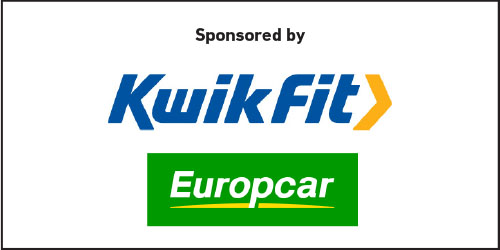

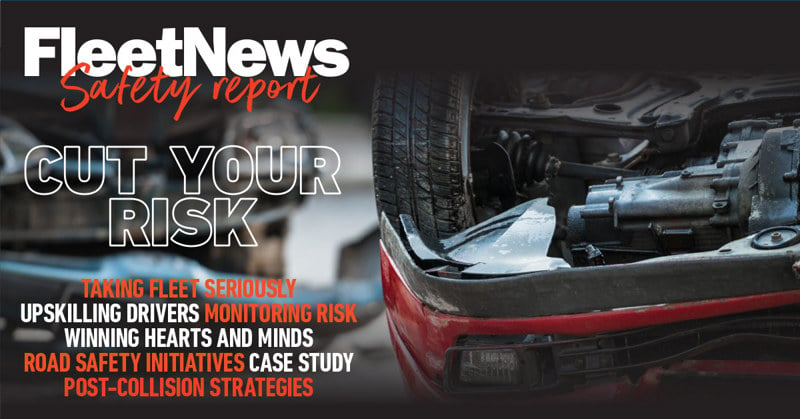




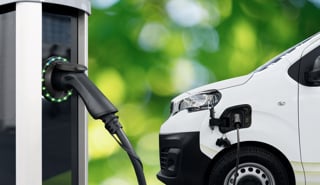



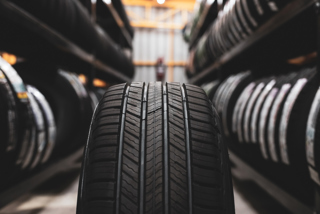










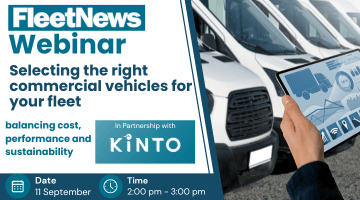

Login to comment
Comments
No comments have been made yet.